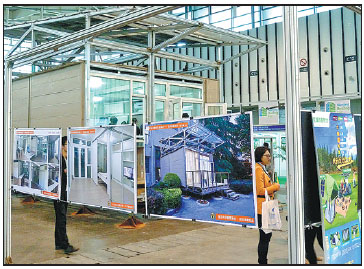Latest green building standard launched
A new internationally recognized standard for measuring, certifying and monitoring building and construction features that affect human health and well-being is being introduced to a project in China for the first time.
The Well building standard system is being offered through a collaboration between the Green Building Certification Institute and the International WELL Building Institute, both of which are US-based. China's first Well-certified project will be in Shanghai and other projects have also applied for a rating.
Well, which complements other green building rating programs such as Leed, or Leadership in Energy & Environmental Design, and Three Star, has been launched at a time of increased environmental awareness among the Chinese people who are looking for solutions to improve quality of life, said Rick Fedrizzi, the Green Building Council's CEO and founding chair.
"We are confronting massive health challenges that are challenging our complete physical, mental and social wellbeing.
"As these challenges continue to mount, all of us have an obligation to be more purposeful when addressing how human health relates to our environment. The Well certification program is a powerful way to accelerate better, healthier buildings throughout China."
IWBI and GBCI will hold several roadshows in China in May to introduce the Well system to more Chinese developers and residents.
"We are excited by the strong interest and demand we have already received from companies and projects that are interested in Well certification, and merging together best practices in environmental and human sustainability," said Paul Scialla, founder of the International Well Building Institute.
The standard is based on a body of medical research that explored the connection between the buildings where populations spend more than 90 percent of their time and the health and wellness of the people in them.
"There is a great market opportunity in China for companies to be at the forefront of healthy building practices," said Scialla.
GBCI, as the official certifying body of both Well and Leed, will integrate the certification and credentialing processes of both systems to help project teams - in China and some 40 pilot projects elsewhere in the world, initially - deliver on both their environmental and human health goals, the officials said.
Well's development took five years, and researchers as well as physicians from leading medical institutions and building industry were involved.
It sets performance requirements in seven categories: air, water, nourishment, light, fitness, comfort, and the mind. The certification will increase construction costs by between 1 and 3 percent, mainly on building design or the materials used.
"A very tiny part of the additional cost will go to the certification body," said Mahesh Ramanujam, president of GBCI and COO of US Green Building Council, because both the two organizations are non-profit.
IWBI has committed 51 percent of the net profit received from Well building certification project fees toward charitable contributions and impact investment focused on health, wellness, and the built environment.
Ramanujam said Leed accreditation has attracted wide interest in smaller cities in China, as well as Beijing and Shanghai, since green building standards were written into government policy.
According to the National New-type Urbanization Plan released by the central government last year, green buildings should account for half of all new construction by 2020, from 2 percent in 2012.
"It is about changing people's behavior," Ramanujam said.
In China, 160 million square meters of space has been built according to Leed conditions, he added, and as many as 170,000 sq m of space is certified across the world daily, 11 percent of which are in China, Ramanujam said, adding that "we expect that to rise".
wangwen@chinadaily.com.cn
|
Visitors at a green building exhibition in Nanjing, capital of Jiangsu province. Green buildings will account for half of all new construction in China by 2020. Provided To China Daily |



















